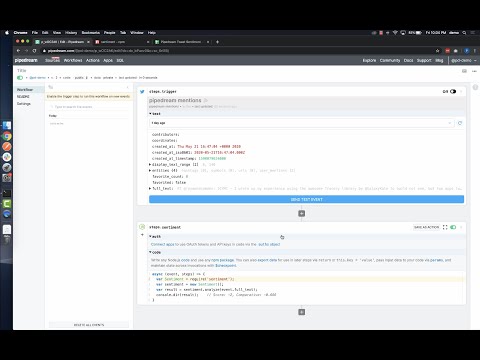What do you want to automate
with Control D and Google Sheets?
Prompt, edit and deploy AI agents that connect to Control D, Google Sheets and 3,000+ other apps in seconds.
Trusted by 1,000,000+ developers from startups to Fortune 500 companies
Popular Ways to Connect Control D with Google Sheets#
Popular Control D and Google Sheets Triggers#
Emit new event each time a comment is added to a spreadsheet.
Emit new event each time a row or rows are added to the bottom of a spreadsheet.
Emit new event each time a row or rows are added to the bottom of a spreadsheet.
Emit new event each time a row or cell is updated in a spreadsheet.
Popular Control D and Google Sheets Actions#
Add a single row of data to Google Sheets. See the documentation
Add multiple rows of data to a Google Sheet. See the documentation
Overview of Control D#
The Control D API allows you to manage and monitor internet access across different devices and networks. With it, you can automate the control of browsing data, enforce internet access policies, and generate detailed reports on internet usage. When integrated with Pipedream, these capabilities can be extended to automate workflows involving data from other apps, trigger actions based on internet usage patterns, and much more, leveraging Pipedream's capability to connect with 3,000+ other apps and services.
Connect Control D#
import { axios } from "@pipedream/platform"
export default defineComponent({
props: {
control_d: {
type: "app",
app: "control_d",
}
},
async run({steps, $}) {
return await axios($, {
url: `https://api.controld.com/users`,
headers: {
Authorization: `Bearer ${this.control_d.$auth.api_token}`,
"Accept": `application/json`,
},
})
},
})
Overview of Google Sheets#
The Google Sheets API allows for the creation, reading, updating, and deletion of data within Google Sheets, enabling a robust platform for spreadsheet management and data manipulation. Through Pipedream, you can craft serverless workflows that respond to various triggers, such as webhook events, emails, or scheduled times, to interact with Google Sheets. This synergy can automate reporting, synchronize data across applications, manage inventory, track leads in a CRM, or even conduct survey analysis by updating and retrieving sheet data on the fly.
Connect Google Sheets#
import { axios } from "@pipedream/platform"
export default defineComponent({
props: {
google_sheets: {
type: "app",
app: "google_sheets",
}
},
async run({steps, $}) {
return await axios($, {
url: `https://www.googleapis.com/oauth2/v1/userinfo`,
headers: {
Authorization: `Bearer ${this.google_sheets.$auth.oauth_access_token}`,
},
})
},
})
Related Videos#



Community Posts#


